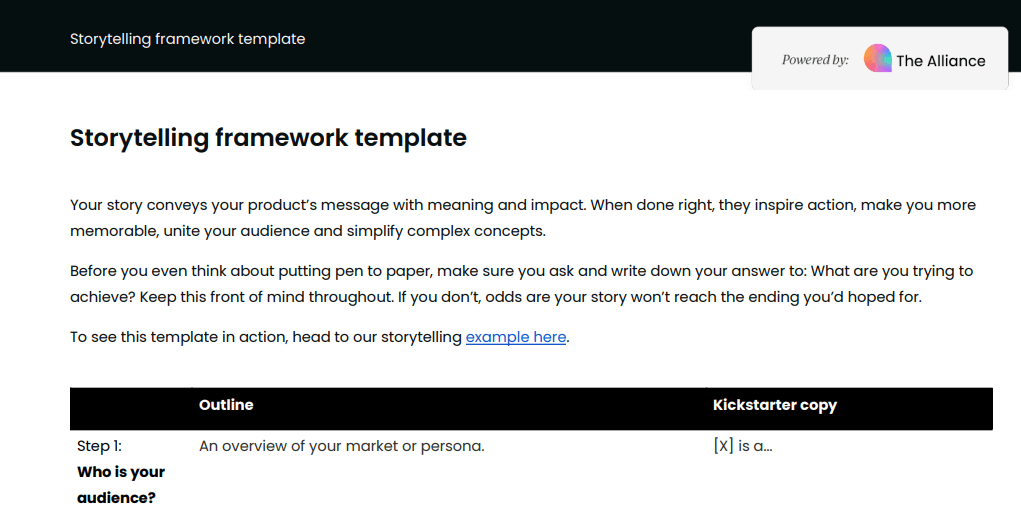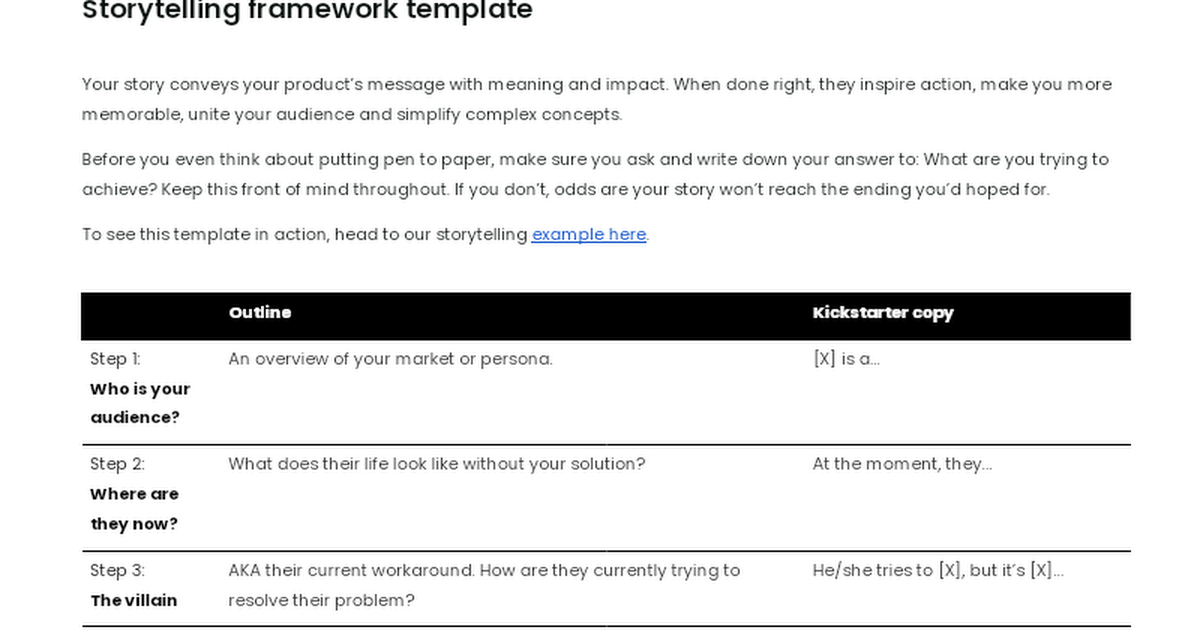What is the storytelling framework?
The storytelling marketing framework is designed to help CS professionals craft a narrative that conveys a product’s value in a meaningful way that resonates with the target audience.
To do this, the framework breaks down the storytelling process into actionable steps, from identifying your audience’s challenges to showing how your solution changes their world for the better. It’s an ideal tool for marketers looking to create memorable, relatable messages that resonate deeply with their target audience.
We have an example of a filled-out template for inspiration.
What's inside the storytelling framework template?
The storytelling framework template guides you through a structured, step-by-step process to create a narrative that engages and influences. Here’s what you’ll find inside:
- Audience analysis: Start by defining your audience and understanding what their lives look like without your solution. Clarify the unique pain points they face and set the stage for why your product matters.
- Identify the conflict: Outline the “villain” or the problem that stands in the way of your audience’s goals. Show how current workarounds are falling short and introduce the struggles that make your solution necessary.
- Present the transformation: Describe how your product replaces the “villain” and enhances your audience’s lives. Paint a vivid picture of the benefits, and create an emotional connection by highlighting how the solution positively impacts other stakeholders as well.
- The fairytale ending and moral: Show how your solution leads to a “happily ever after.” Wrap up with the moral of the story, reinforcing that achieving their goals is possible—and much easier—with your product.
How to use the storytelling framework template
- Define your story elements: Start by identifying each key element of your story—your audience, the challenges they face, and the change they’re hoping for. Use this framework to clearly define the roles, conflicts, and resolutions within your narrative.
- Create a compelling narrative: Follow the framework’s prompts to structure a story that flows naturally and keeps your audience engaged. Each step builds upon the previous one to craft a story that feels both relatable and persuasive.
- Incorporate real-world testimonials: End your story with customer testimonials, highlighting real success stories and authentic feedback. This reinforces trust and makes your narrative even more impactful.
Download your storytelling framework template







 Follow us on LinkedIn
Follow us on LinkedIn ![Storytelling framework [template]](/content/images/size/w600/2024/11/Storytelling-framework-template.png)

